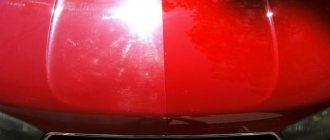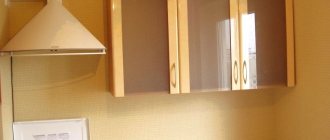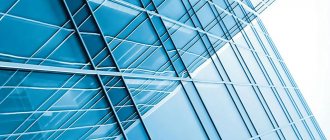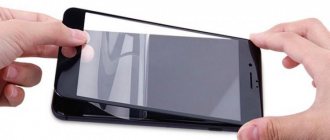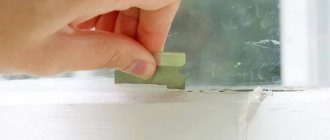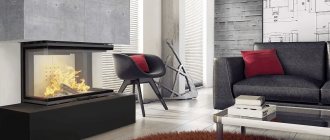SHARE ON SOCIAL NETWORKS
FacebookTwitterOkGoogle+PinterestVk
In modern construction industry, there are many finishing and auxiliary materials in the form of putties, primers and protective mixtures, but along with them there is a known product that has been tested for centuries, called liquid glass. The use of silicate mixtures is very wide, which makes them universal and unique. More details about the areas of use of this substance can be found in this article.
Liquid glass is a universal product with a wide range of applications
Composition, properties and raw materials
Three components
are involved in creating the hard glass we are used to
- sand,
- water,
- limestone.
Si + Na + Ca = glass.
If we melt only two, we get a two-component glassy mass:
Si + Na = liquid glass.
Liquid glass is a generalized concept for all aqueous alkaline solutions of silicates .
Depending on the alkaline cation involved, it is divided into:
- sodium (Na),
- potassium (K),
- lithium (Li),
- with an organic base (for example, ammonium),
- combined and complex type.
In short, liquid glass is a solution based on sodium, potassium or lithium silicates. Mixtures of sodium and potassium silicate are also produced in different proportions.
Outwardly, it is a viscous, thick, rubber-like mass of yellow, green, gray or colorless without impurities and inclusions visible to the eye; it hardens in air.
This technical product has another name (trade) - silicate glue . It can be presented as:
- silicate block (granules);
- liquid solution;
- soluble powder.
The invention of liquid glass belongs to the German professor Johann Fuchs. The composition of alkalis and silicic acid he discovered in 1818 remains relevant today , only the technology for its production has changed.
Each type of this product has its own characteristics. The areas of use of the material, which we will consider below, also depend on this.
What is papertol
Traditional Japanese paper art also includes the papertool technique, with the help of which three-dimensional images are manually created from flat printing. Identical “pictures” are pasted on top of each other using adhesive pads or tape, resulting in two- and three-dimensional compositions.
There are quite a lot of “paper” craftsmen in the Land of the Rising Sun, and everyone tries to bring something new to this art, using different source images and their own inexhaustible imagination.
The first paperwork style crafts came to Europe in the 17th century and immediately caused a rush of demand for decoupage. However, the latter and the paper table are different types of art and are similar to each other only in the source material.
Characteristics and applications
Liquid glass is widely used in household and industrial areas. The popularity of the material is due to:
- High level of astringent properties and penetrating abilities.
- The widespread availability of initial components (sand, soda, potash, cullet) and their low cost. This makes the final product accessible and inexpensive. Sodium liquid glass costs from 16 rubles per kg, potassium glass - from 54 rubles per kg.
- Lack of toxicity both during production (including from recycled materials) and during use. Liquid glass is classified as “green chemistry” because it is environmentally friendly and safe.
- Absolutely non-flammable, no release of harmful substances when exposed to high temperatures.
- Low heat conductivity.
- The possibility of using it as soluble silica - there are no natural analogues .
Withstands high temperatures (up to 1200°C). Liquid glass hardens at temperatures from 0°C.
Liquid glass is used to create:
- silica gel;
- catalysts;
- adsorbents;
- lead silicate;
- sodium metasilicate;
- production of white soot;
- textile softener;
- zeolites;
- silica sol;
- organosiloxanes and other substances.
In addition, it is widely used for the production of :
- adhesives;
- paints;
- fire-retardant, protective, non-stick, anti-corrosion, anti-glare coatings;
- electrodes;
- as a component for strengthening primers;
- impregnating compositions for wood, paper, fabrics, construction products and other materials;
- agglomeration of ores.
By adding liquid glass to a variety of materials, you can increase them :
- strength;
- density;
- durability;
- abrasion resistance;
- fire-resistant and water-repellent properties;
- chemical inertness;
- corrosion resistance.
In addition, you can eliminate the appearance of mold, mildew and rot.
Main technical characteristics:
- density;
- silicate module;
- percentage of silica and metal oxides.
The silicate module indicates the adhesive ability of the material . The larger this value, the higher the ability. The product with module 2.6 - 3.6 is in greatest demand.
A frozen solution is a soft, jelly-like, thickened mass; after thawing, the properties return.
There may be sediment that does not affect the quality.
The disadvantages of the material include:
- incompatibility with brick surfaces - destruction occurs;
- fragility when used in pure form - combination with other substances is necessary;
- very fast setting - a cement mixture with the addition of liquid glass, depending on the concentration of the latter (2 - 10%) begins to harden within 5 - 50 minutes);
- alkaline nature - work should be carried out in protective clothing; Avoid contact with skin or eyes.
What you need to know about the nuances of work
Every beginner in this business can master the papertol technique without much effort. However, there are some subtleties that need to be taken into account at the beginning of the process and during processing.
- Beginners are advised to choose images that have large details: they are easier to work with at first.
- The main rule for creating compositions using this technique is to correctly highlight the background, intermediate and front zones of the picture.
- You should first determine the order in which the paper elements will be combined. Additional decor such as dry leaves, flowers and other natural elements will add naturalness to the picture.
- The volume and desired three-dimensionality of a painting made using this technique will be provided by treatment with water-based varnish, with the help of which light reflections will be reflected, emphasizing the three-dimensional structure of the product.
- To achieve a more realistic 3D effect, masters advise inserting the picture into a special recessed frame.
If the goal of the work is to create a “antique” painting, then it is not recommended to use varnish.
How to make your own grass pillow
Production
In Russia, the following types of liquid glass are produced in industrial quantities:
- sodium,
- potassium,
- mixed type.
Production is regulated by GOSTs:
- 13078-81,
- 18958-71,
- TU 21-23-109-78,
- 21-23-109-73.
Other types are produced in accordance with temporary standards of enterprises and specifications .
90% of the total production of soluble silicates comes from sodium liquid glass.
There are three main production technologies, all of which are characterized by high energy costs and the use of complex equipment.
But there is another, new one that is different:
- ease of production;
- using glass waste (cullet) as a silicon-containing raw material.
Let's take a brief look at each technology.
Sintering a mixture of natural sand and technical soda
Glass production includes the following steps:
- mixing anhydrous components;
- firing the resulting mixture in ovens at temperatures reaching 1300°C;
- cooling the fused components on a moving conveyor until glassy pieces (silicate blocks) form;
- placing the pieces in an autoclave to dissolve them with steam under pressure, or crushing the pieces into a powder, which is then dissolved in hot water.
Obtaining a product by processing silicon raw materials
The receiving process includes:
- grinding raw materials in a mill with a vibrator;
- adding sodium hydroxide (potassium, lithium);
- stirring silica raw materials at temperatures up to 1000°C with a saturated alkali solution; duration - from 30 minutes to 1.5 hours in an autoclave with a vibrator.
Hydrothermal method
The product is obtained by dissolving silicon raw materials with strong alkaline solutions .
This technology is more simplified.
It is not necessary to heat the components to temperatures close to 1000°C.
Heating will occur on its own due to the release of heat as a result of the alkaline reaction.
New technology - the use of cullet
Recyclable materials are pre-prepared:
- wash;
- cleared of impurities;
- crushed.
It is necessary to get rid of oxides of calcium, magnesium, iron and other metals so that the raw materials are suitable for further use.
After melting, the broken glass turns into a silicate block - in this form, the raw materials are used to manufacture the final product .
Liquid glass in finished form is obtained in a vibrating mixer as a result of 0.5 - 1.5 hours of interaction of the mixture with water heated to a temperature of 100 °C.
The use of recycled materials has a positive effect on the quality of the final product and at the same time solves the problem of recycling glass containers.
Recycling 10% of cullet reduces gas consumption by 3%. In other words, if you produce glass exclusively from cullet, gas consumption will decrease by 30%.
Natural gas is the main fuel used in the Russian glass industry.
Master classes for beginners
Beginners can be recommended to start taking their first steps with simple plot images with a limited number of small fragments.
Operating technique
A good solution for this is the ready-made kits, which have already been mentioned. They consist of ready-made and even numbered elements. To start the work process, you need to print out the picture in three or four copies and start gluing it.
We offer step-by-step instructions.
- A thick piece of paper with one of the printed copies will be the basis for the future painting, and all subsequent paper parts will be attached on top of it. When moving on to working with other layers, do not forget that you need to retreat three centimeters from the edge of the sheet, making room for the frame.
- Taking the second copy, some details of the picture are cut out from it - those that create the distant background, such as houses or natural elements. Most often these are small fragments. Larger parts are glued later.
- These drawings are glued to the background with tape with both sticky sides.
- To make the picture look more neat, go over the sections of the fragments without entering their “territory” with a felt-tip pen of the appropriate color.
- The following layers are performed in the same way, but more and more details of the drawing are already used.
ADVICE. There should not be too many layers so that the finished composition does not look overly overloaded with details and therefore chaotic.
Papertool flowers
Making “papertola” flowers is very exciting and interesting, especially for people who already have some knowledge of this technique.
Homemade amulets for the home: 5 things that will not let trouble into your home
Flowers are small details in the form of petals, leaves and buds, interesting color transitions.
- An uncut design is glued onto the base sheet.
- From the second whole picture, background white fragments are cut out, and the remaining picture is glued to the base.
- Then cut out smaller parts - leaves and flowers. They will “grow” above the base sheet and the first layers. If, say, clusters of lilac flowers are being developed, then for greater volume they are glued in several layers.
It is worth noting that the plant-floral theme in this technique will always be relevant - it is both a wonderful gift and a nice piece of furniture, say, in a country-style kitchen.
Making at home
Let us immediately make a reservation that this is only possible if there is an autoclave or crucible.
Two recipes:
- (anhydrous sodium carbonate) ground in a mortar There it dissolves, forming sodium silicate. Bake the mixture until completely melted. Remove the resulting sodium silicate from the oven and add hot water. The resulting solution will be liquid glass. You can also treat silicon-containing raw materials in an autoclave with a concentrated solution of sodium hydroxide.
- Silicon raw materials are dissolved with alkali . Conditions for the process: normal atmospheric pressure plus the boiling point of the alkali used (depending on the concentration, for a 0.05% NaOH solution it is 101.3 °C).
What can be made from liquid glass?
You can evaluate the merits of the material by preparing:
- Fire-resistant impregnation for wood : 25 g barium sulfate + 7 g zinc oxide + 20 ml water + 25 g liquid glass + optional colored mineral dye. Cover in two layers.
- Reliable glue : sugar + liquid glass + glycerin in a ratio of 4:10:1.
- Repair mixture for stone buildings : cement + liquid glass in a ratio of 4:2. It is recommended to pre-moisten the joints with liquid glass.
- Primer : cement + liquid glass in a ratio of 1:1.
- Waterproofing solution for treating wells, swimming pools and other surfaces: liquid glass + cement + sand in a ratio of 1:1:1.
- Antiseptic solution : liquid glass + water in a ratio of 1:1.
- Putty : zinc white + asbestos in a ratio of 1:2 + liquid glass until a thick paste-like mixture is formed.
- Mixture for fastening iron : manganese dioxide + zinc white + liquid glass (1:1 + the amount required to form a thick slurry). The resulting composition can withstand even hot temperatures.
All materials harden quickly. It is recommended to prepare them immediately before use.
First, the dry ingredients are mixed, then they are supplemented with liquid ingredients.
This material also attracts creative people. Easily amenable to modification, it makes it possible to create a variety of decorative products.
Liquid glass is often used to decorate surfaces and secure various decorative elements:
- beads;
- shells;
- patterns.
Exclusive things are made from it:
- hairpins;
- brooches;
- earrings;
- pendants;
- beads
Also used for decorating paintings, making flowers, figurines and vases.
Glass crafts
Glass objects surround us. These are windows, decorative items, lighting fixtures, jewelry, etc. The beauty, durability and unusual appearance of this material are the reasons that designers often use it to make a variety of things. It turns out that making amazing glass crafts from liquid glass is not at all difficult . The main thing is patience, accuracy and the desire to complete this painstaking work.
DIY liquid glass products: what can you do?
There are a lot of varieties of crafts made from liquid glass. It all depends on your imagination. Handmade items will decorate the interior. In addition, this is a wonderful gift for relatives or friends. Here is a far from complete list of handmade options:
- Flower composition.
- Installation.
- Painting.
- Pattern on glass.
- Decoration of lamps, glasses.
Let's look at the simplest craft options. After practicing, you can move on to more complex things.
Candlestick
This product will be decorated with coffee beans and glass pieces. A candlestick of any design will do. So, let's get to work:
- To begin, using liquid glass (it can be successfully replaced with PVA glue), carefully glue the coffee beans to the product.
Important! Decorate in this way only the lower part of the product, exactly halfway.
- Wait until the glue is completely dry.
- Paint the top part with spray paint.
Important! Apply the paint not directly to the candlestick, but using a cosmetic sponge.
- After the paint has dried, glue broken glass shards to the top of the piece.
- Use liquid glass as an adhesive. The shape of glass particles and their location depends only on your imagination.
Painting
To make a craft with liquid glass in the form of a painting:
- To begin, draw any picture on a piece of plywood.
- If you don't have any special artistic abilities, use templates.
- Now for work you will need glue (liquid glass) and multi-colored glass pieces. They need to be glued very tightly so that there are no gaps.
- Do not attempt to touch the pieces until the adhesive has completely cured.
Important! In the same way, you can decorate a box, watch, or mirror. Glass pieces go well with sparkles, beads, and sea shells.
